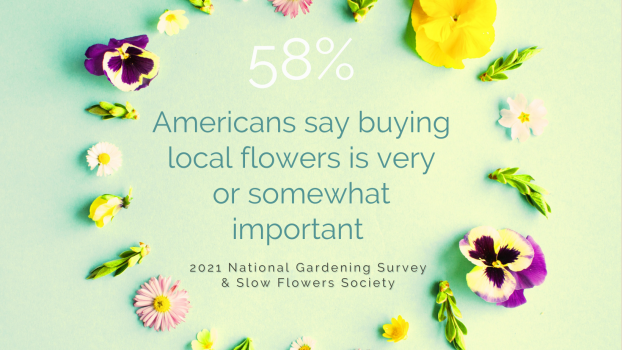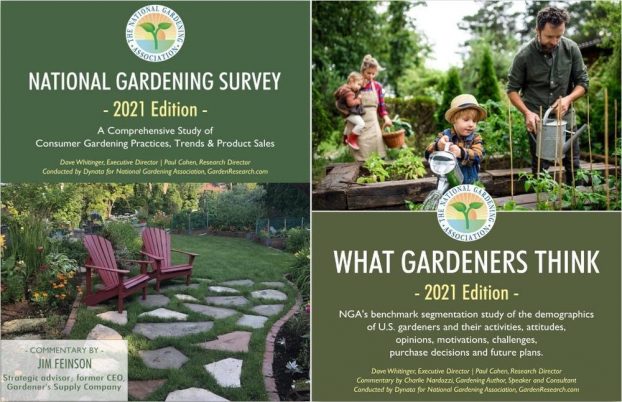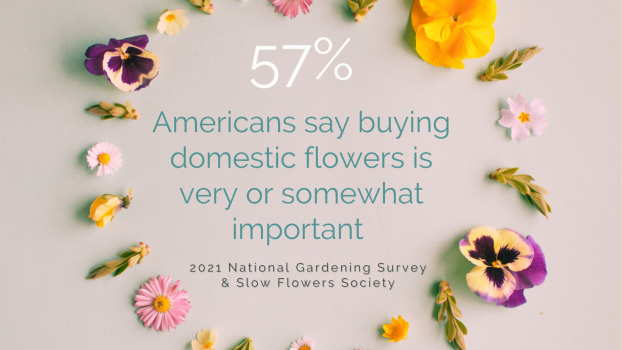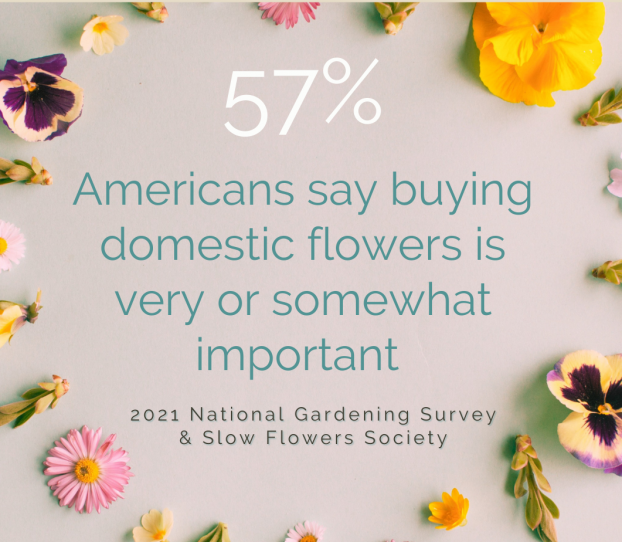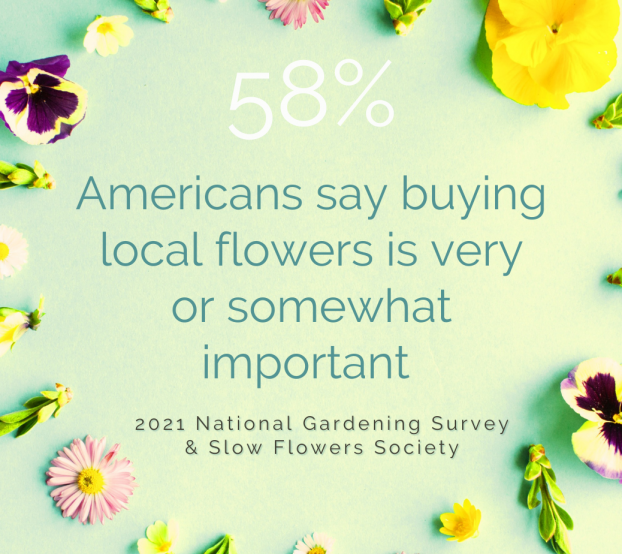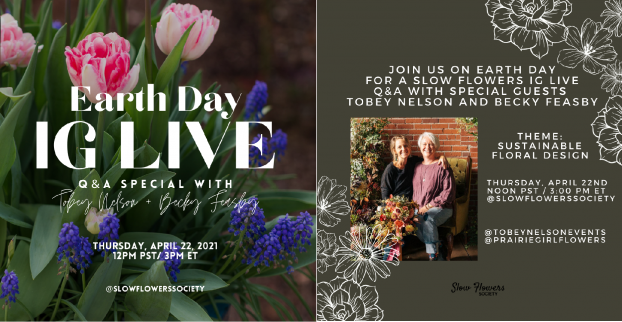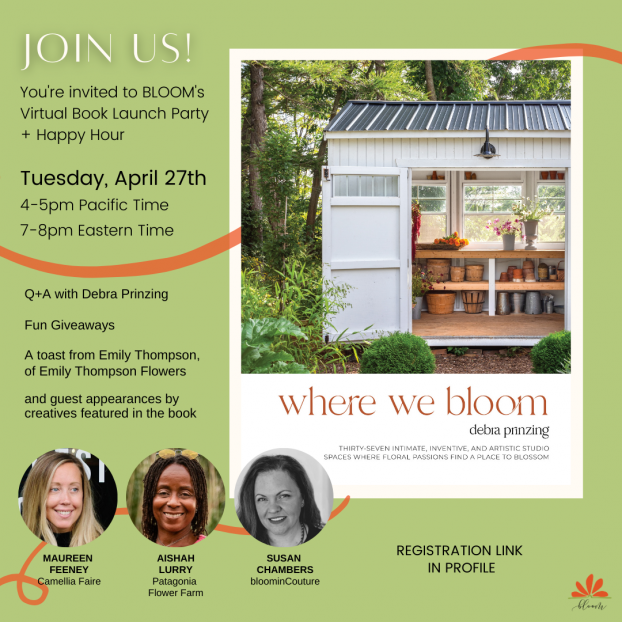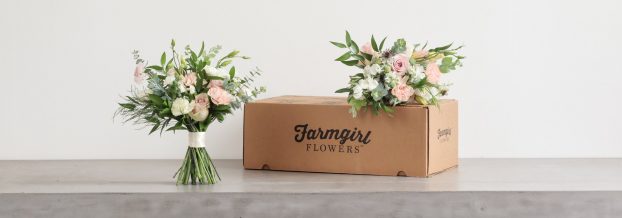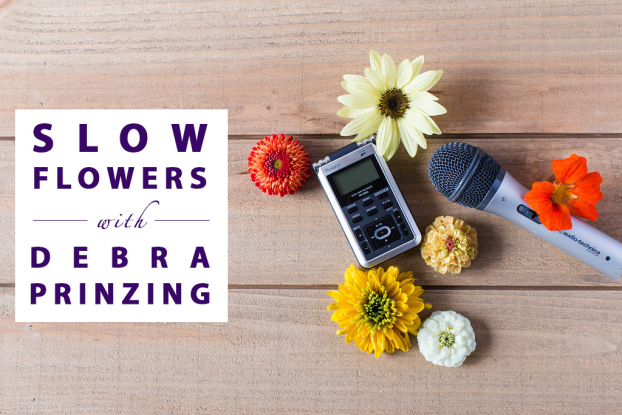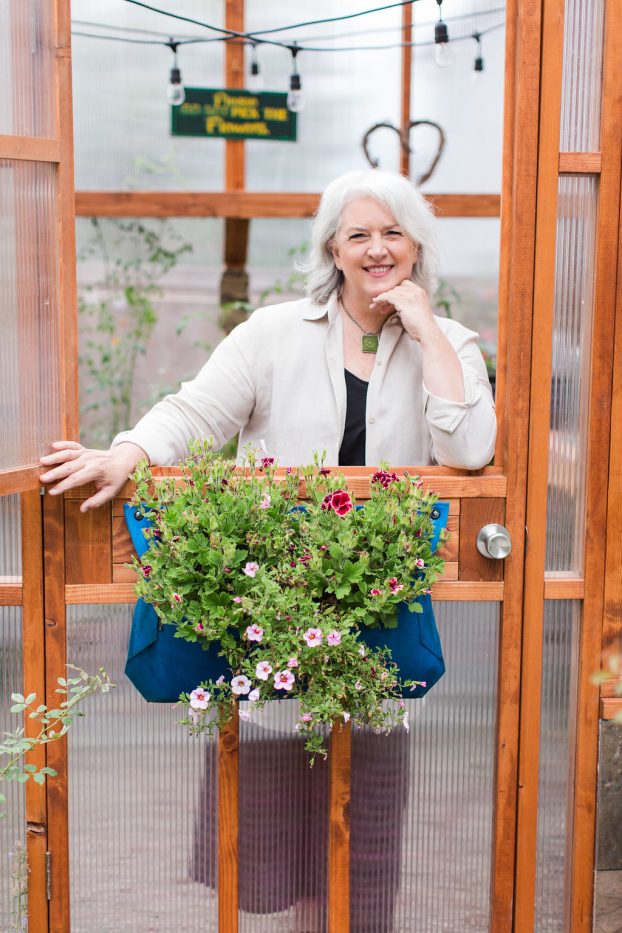The trend line is moving up!
It’s Earth Day 2022 and wow, has the past year been packed with great news for flower and garden lovers!
One year ago, Slow Flowers Society announced the first consumer insights around cut flower purchases, collected as part of the 2021 National Gardening Survey. The NGS is a well-regarded survey conducted annually since 1973, which tracks consumer behavior and produces a comprehensive market research report used by the lawn and garden industry to make strategic decisions around product development and sales.
Last year’s Survey established benchmarks on consumer attitudes about domestic and locally-grown cut flowers and their purchasing preferences. The findings were so encouraging and they gave us a statistically accurate tool to evaluate consumer attitudes and behavior shifts from 2020 moving forward.
For 2022, Slow Flowers has again partnered with the National Gardening Association, sponsors of the National Gardening Survey. This year’s research was conducted for a full month, from early January through early February. Around 2,600 people completed the national survey.
In planning for our second consecutive year, we worked with the NGS to expand last year’s questions to add the phrase “floral arrangements” to the cut flower question. We are excited to share those insights with you:
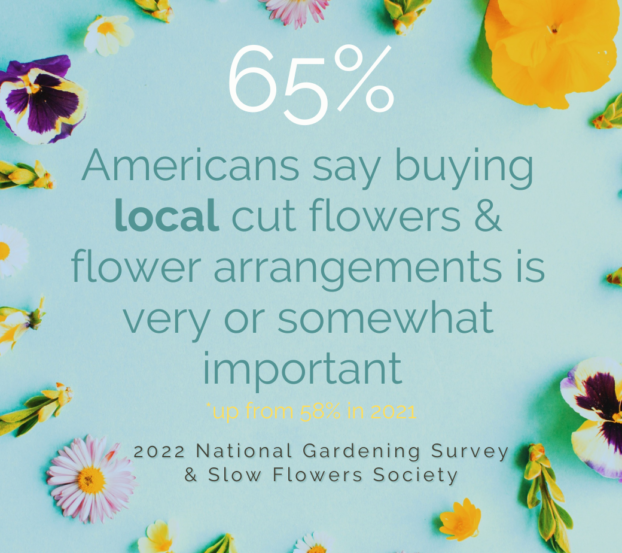
Q: “When buying cut flowers and flower arrangements, how important is it to you that they are Locally Grown?“
For 2022, 65% of respondents indicated it is Very or Somewhat Important that cut flowers and floral arrangements they purchase are locally grown.
That’s up from the 2021 National Gardening Survey, which found that 58% of respondents indicated it is Very or Somewhat Important that the cut flowers they purchase are grown locally.
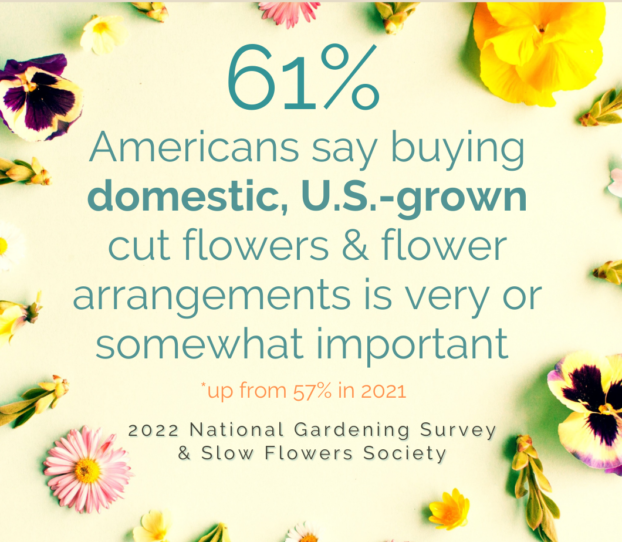
Q. “When buying cut flowers and flower arrangements, how important is it to you that they are U.S. Grown?“
For 2022, 61% of respondents indicated it is Very or Somewhat Important that cut flowers and floral arrangements they purchase are U.S. Grown.
That’s up from the 2021 National Gardening Survey, which found that 57% of respondents indicated it is Very or Somewhat Important that the cut flowers they purchase are U.S. Grown.
Combined Importance When Buying Cut Flowers/Floral Arrangements
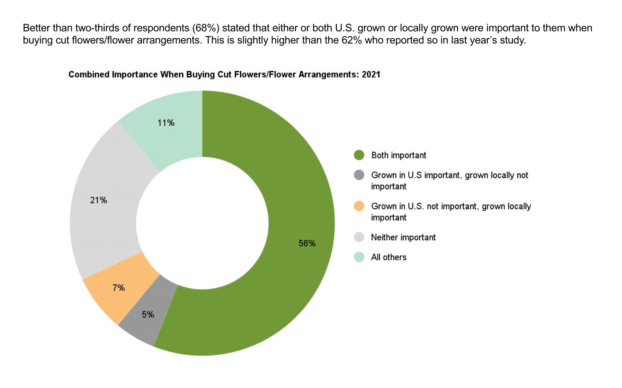
These numbers are encouraging! What’s to account for the needle moving? The 2022 survey included a wording change — from “Cut Flowers” to “Cut Flowers/Flower Arrangements.” As NGS researcher Paul Cohen explained, it’s likely that these numbers are due to a significant increase in the percentage of respondents who said they made a flower purchase. He also notes that the addition of “flower arrangements” likely spurred more respondents to report flower purchases. Paul Cohen also speculates that the significant backlog of weddings that created a boom year for weddings in 2021 (from only 1.3 million in 2020 to roughly 2 million in 2021) also contributed to the increased number of customers for local and US-grown cut flowers. And as a footnote, 2022 is forecast to be another banner year for weddings, with 2.5 million couples expected to tie the knot.
Where Do Consumers Purchase U.S.- and Locally-Grown Flowers?
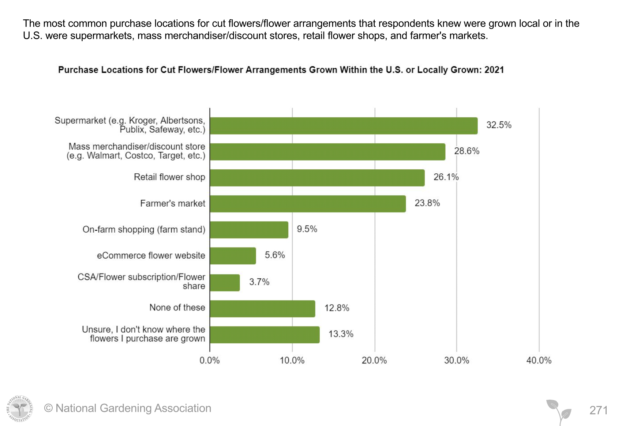
With input from the Slow Flowers community, we added a new follow-up question to the National Gardening survey. We asked:
Q. “When purchasing cut flowers and flower arrangements that you know are grown within the U.S. or locally grown, which of the following places have you purchased them from?”
The most common purchase locations for cut flowers and flower arrangements grown within the US or locally grown were supermarkets, mass merchants/discount stores, retail florists and farmers’ markets.
Supermarkets: 32.5%
Mass Merchandiser/Discount Stores: 28.6%
Retail Flower Shops: at 26.1%
Farmers’ Markets: 23.8 %
There is still much room for education around flower origin. Just over 13% of respondents stated they were unsure or do not know where the flowers they purchased were grown.
Other notable outlets included:
On-Farm Shopping: 9.5%
eCommerce Flower Websites: 5/6%
CSA flower subscriptions: 3.7%
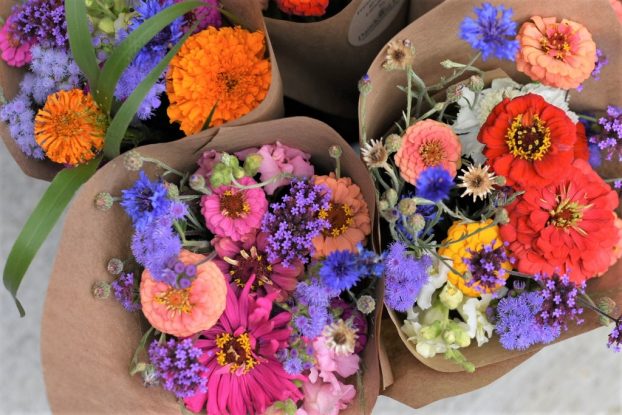
So what does this mean for you and your floral enterprise? Slow Flowers’ investment to participate in a national survey brings the conversation about the origin of cut flowers and floral arrangements to the center of the dialogue.
Simply by asking these questions, we elevate local and domestic flowers to top of mind — and this is important. The statistics reflect an ongoing cultural shift, one that I predict will only increase.
The survey results are a free resource for our members and we encourage you to incorporate the findings into your own branding, marketing and conversations to elevate your platform.
Next week, we will release a member press kit with resources that include a press release, survey graphics, and social media assets for your use. If we want more people to talk about local and domestic flowers, we need to give them something to write about! We’re doing the same, thanks to your support! You can look for these resources in a special member mailing or find a link to download them at slowflowerssociety.com









